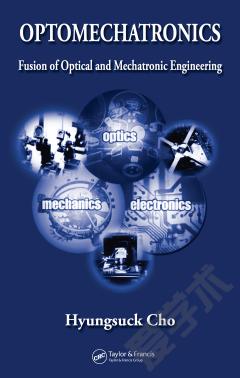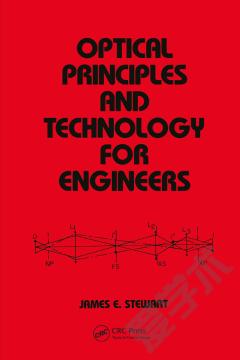Optomechatronics —— Fusion of Optical and Mechatronic Engineering
----- 光机电一体化
Preface INTRODUCTION: UNDERSTANDING OF OPTOMECHATRONIC TECHNOLOGY Historical Background of Optomechatronic Technology Optomechatronics: Definition and Fundamental Concepts Fundamental Functions of Optomechatronic Systems Fundamental Functions Summary References FUNDAMENTALS OF OPTICS Reflection and Refract ion Lenses Multiple Lenses and System Matrices Aperture Stops and Pupils Aberration Polarization Coherence Interference Diffraction Optical Fiber Transmission Gaussian Beam Optics Problems References MACHINE VISION: VISUAL SENSING AND IMAGE PROCESSING Image Formation Imaging Devices Image Display: Interlacing Image Processing Image Representation Binary Image Gray Scale Image Histogram Histogram Modification Image Filtering Mean Filter Median Filter Image Segmentation Region-Based Segmentation Edge Detection Roberts Operator Sobel Operator Laplacian Operator Hough Transform Camera Calibration Perspective Projection Problems References MECHATRONIC ELEMENTS FOR OPTOMECHATRONIC INTERFACE Sensors Signal Conditioning Actuators Microactuators Signal Display Dynamic Systems and Control Problems References OPTOMECHATRONIC INTEGRATION Basic Considerations for Integration Basic Functional Modules Optomechatronic Interface or Integration Integration-Generated Functionalities Problems References BASIC OPTOMECHATRONIC FUNCTIONAL UNITS Optomechatronic Actuation Optomechatronic Sensing Automatic Optical Focusing Acoustic-Opto Modulator Optical Scanning Optical Switch Zoom Control Visual Autofocusing Illumination Control Visual (Optical) Information Feedback Control Optical Signal Transmission Problems References OPTOMECHATRONIC SYSTEMS IN PRACTICE Laser Printer Optical Storage Disk Atomic Force Microscope Confocal Scanning Microscope Projection Television Visual Tracking System Problems References APPENDIX A1: SOME CONSIDERATIONS OF KINEMATICS AND HOMOGENEOUS TRANSFORMATION APPENDIX A2: STRUCTURAL BEAM DEFLECTION APPENDIX A3: ROUTH STABILITY CRITERION INDEX
{{comment.content}}








 京公网安备 11010802027623号
京公网安备 11010802027623号